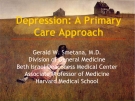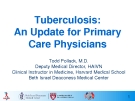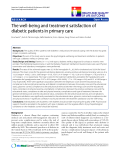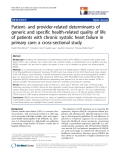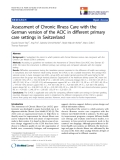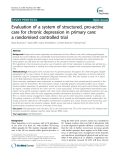
Bệnh viện Trung ương Huế
112 Journal of Clinical Medicine - Hue Central Hospital - Volume 17, number 2 - 2025
Received: 20/01/2025. Revised: 01/3/2025. Accepted: 17/3/2025.
Corresponding author: Nguyen Minh Tam. Email: nmtam@huemed-univ.edu.vn. Phone: 0918910466
DOI: 10.38103/jcmhch.17.2.17 Original research
ASSOCIATIONS BETWEEN PRIMARY CARE CONTINUITY, ILLNESS
PERCEPTION, AND HYPERTENSION CONTROL AMONG HYPERTENSIVE
PATIENTS IN KON TUM PROVINCE, VIETNAM
Nguyen Minh Tam1,2, Ho Dac Truong An3, Le Ho Thi Quynh Anh2, Che Thi Len Len3, Phan
Thuy Hong4, Huynh Van Minh5
1Faculty of Public Health, University of Medicine and Pharmacy, Hue University, Hue City, Vietnam
²Department of Family Medicine, University of Medicine and Pharmacy, Hue University, Hue City, Vietnam
³Family Medicine Center, University of Medicine and Pharmacy, Hue University, Hue City, Vietnam
⁴Kon Tum Provincial General Hospital, Kon Tum Province, Vietnam
⁵Department of Internal Medicine, University of Medicine and Pharmacy, Hue University, Hue City, Vietnam
ABSTRACT
Background: In low-resource settings, hypertension control in primary care is challenging. Continuity of care
(COC) and illness perception (B-IPQ) play crucial roles in hypertension management, yet their association with blood
pressure (BP) control remains unclear. This study aims to examine the interplay of COC and illness perception on BP
control among hypertensive patients.
Methods: A cross-sectional study was conducted among 397 hypertensive patients attending commune health
centers in Kon Tum province, Vietnam. COC was assessed using the Continuity of Care Index (COCI), illness perception
was measured using the Brief Illness Perception Questionnaire (B-IPQ), and BP control was defined as <140/90 mmHg.
Multivariate logistic regression was performed to evaluate the associations between COC, B-IPQ, and BP control.
Results: BP control was achieved by 54.7% of participants. While continuity of care index (COCI) was high (94.2%),
it was not associated with BP control (p > 0.05). In contrast, higher illness perception (B-IPQ) scores, observed in
44.6% of participants, were consistently linked to better BP control (OR = 1.02 - 1.03, p < 0.05). Urban residence,
female gender, BMI, and medication adherence were strong predictors (p < 0.05).
Conclusions: Illness perception is a key determinant of BP control, while visit-based COC alone does not appear to
be a determining factor. Continuity in provider-patient relationships and structured patient education may be necessary
to translate high COC into better BP outcomes. Enhancing illness perception through targeted interventions and
ensuring quality interactions within primary care settings could improve hypertension management, particularly in rural
healthcare contexts.
Từ khóa: Hypertension, Blood Pressure Control, Continuity of Care, Illness Perception, Primary care.
I. BACKGROUND
Hypertension is a leading cause of cardiovascular
morbidity and mortality worldwide, yet its
management remains suboptimal, particularly in low-
and middle-income countries (LMICs) [1]. While
primary care plays a crucial role in hypertension
prevention and management, its effectiveness is
often compromised by gaps in service continuity,
poor provider coordination, and inconsistent patient
follow-up [2]. These challenges are exacerbated in
rural and resource-limited settings, where healthcare
workforce shortages, geographic barriers, and
limited patient education further hinder long-term
blood pressure (BP) control [3].
Effective hypertension control requires not only
a well-functioning healthcare system but also active
Associations between primary care continuity, illness perception...
















